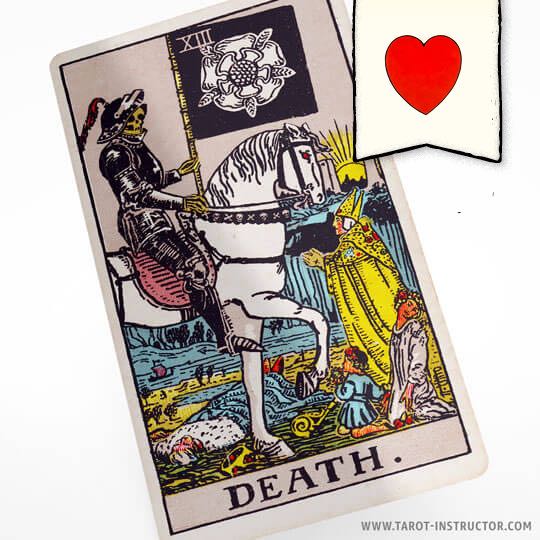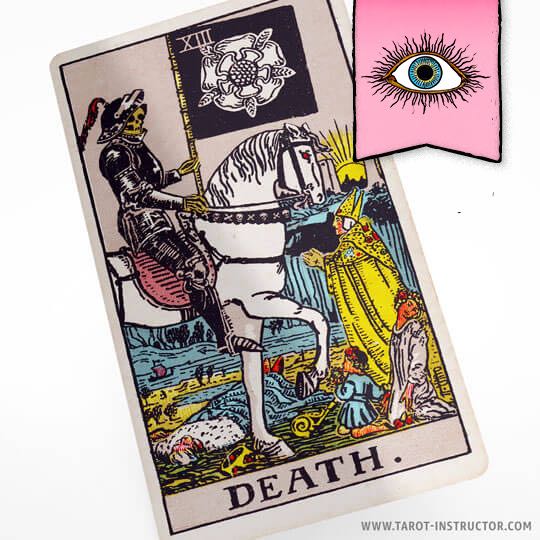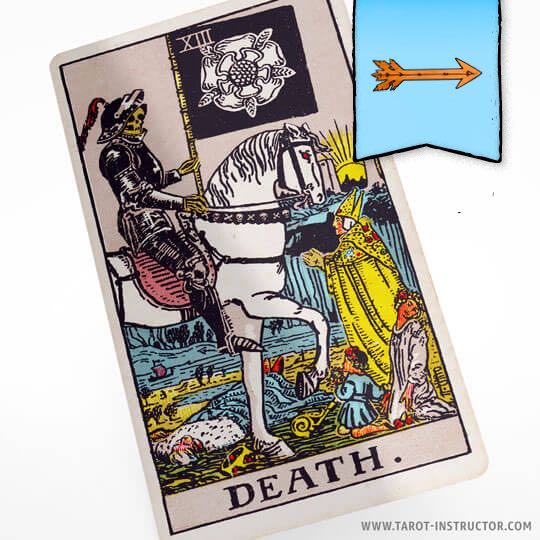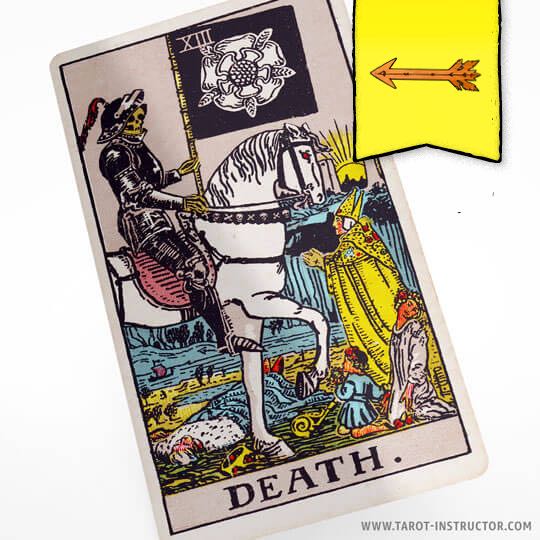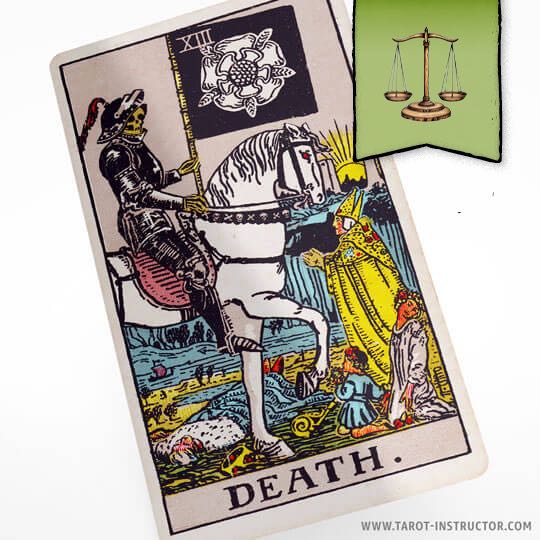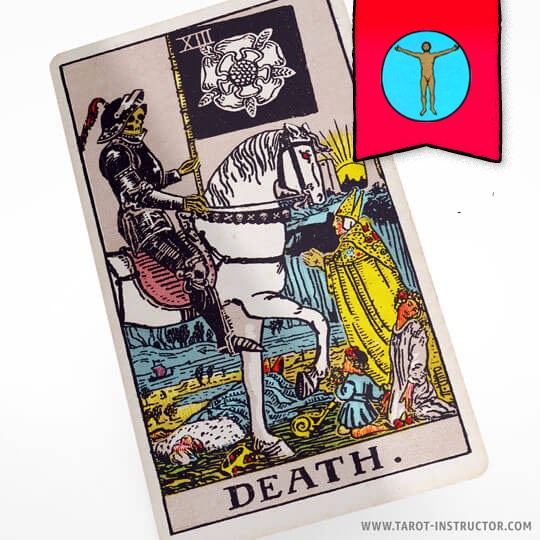Death tarot card features following symbolic elements
Death tarot card features following symbolic elements
Table of content
Death as advice
„Release what no longer serves you to welcome new beginnings.“
Death keywords upright
Transformation, Endings, Change, Release, Major Changes.
Death keywords reversed
Fear, Stagnation, Delay, Resistance, Avoidance.
Death card element
Water
Death zodiac sign
Scorpio
Death as a Person: Understanding Its Meaning and Significance
When contemplating the concept of Death as a person, many find it both fascinating and profound. Death as a person is a symbolic figure that appears in myths, stories, and spiritual beliefs across cultures. It embodies the inevitable transition from life to eternity, serving as a reminder of life’s transient nature. This article explores Death as a person, examining what it means when depicted in different forms, how it manifests in various contexts, and what lessons it offers about mortality, transformation, and acceptance.
Death as a Person: An Overview
Death as a person is a universal archetype that has appeared throughout history in art, literature, and folklore. It is often portrayed as a figure that guides souls, signifies change, or reminds us of our mortality. When considering Death as a person, think of it as a symbol of life’s inevitable cycles, a personification that helps us confront the unknown with curiosity rather than fear.
Death as a Person: Symbolism and Meaning
Death as a person embodies the concept that mortality is a natural part of existence. It is not merely an end but also a gateway to transformation, renewal, and rebirth. When we think of Death as a person, we often imagine a figure that is both mysterious and impartial—an impartial guide who ensures the cycle of life continues.
This personification allows us to relate to Death more personally, helping us accept our fears and understand that death is an integral aspect of the human experience. It encourages reflection on how we live and what legacy we leave behind.
The Depiction of Death as a Person
In various cultures, Death as a person has been depicted differently. In Western traditions, Death is often visualized as a skeletal figure in a black cloak, wielding a scythe. In other cultures, it may appear as an angelic figure or a wise old man or woman. These images serve to personify the abstract concept of mortality, making it more tangible and relatable.
The depiction of Death as a person varies depending on cultural beliefs and personal interpretations. Some see Death as a compassionate guide, while others perceive it as a stern judge. Regardless of the form, Death as a person symbolizes the universal truth that mortality touches all beings.
Death as a Person: The Upright Perspective
When considering Death as a person in its most neutral or positive light, it can be seen as a gentle guide that ushers souls into the next realm. This perspective emphasizes acceptance, peace, and understanding.
The Compassionate Guide
In many spiritual traditions, Death as a person is viewed as a compassionate companion. It is not an enemy but a guide who helps souls transition smoothly. This interpretation encourages us to see death as part of life’s natural rhythm—a necessary step towards growth and transformation.
When Death as a person is perceived as comforting, it helps alleviate fears associated with mortality. It reminds us that death is a part of life’s cycle and that embracing it can lead to a more meaningful existence.
Embracing Mortality
Seeing Death as a person in a positive light encourages us to live fully, knowing that life is finite. It inspires mindfulness and appreciation for each moment, fostering a sense of gratitude. Accepting Death as a person allows us to confront our fears and focus on what truly matters.
This perspective promotes living authentically, understanding that our time is limited. It also inspires compassion and empathy towards others facing their own mortality.
Death as a Person: The Reversed Perspective
When Death as a person appears in a reversed or negative light, it can symbolize fear, denial, or resistance to change. This view often reflects an unwillingness to accept mortality or the difficulties associated with loss.
The Fear of Death
In this context, Death as a person in reverse may represent the fear of dying or losing loved ones. It can manifest as anxiety, denial, or avoidance—refusing to confront the reality of mortality.
Individuals who see Death as a person in this way may struggle with acceptance, leading to emotional distress or procrastination in facing life’s inevitable end. This perspective can hinder personal growth and peace of mind.
Resistance to Transformation
Reversed Death as a person might also symbolize resistance to change. Just as death signifies transformation, resisting it can mean clinging to the past, refusing to let go, or fearing the unknown.
This resistance can cause stagnation, preventing personal development and healing. It highlights the importance of embracing change as a vital part of life.
Healing and Acceptance
Overcoming the fear associated with Death as a person in reverse involves acceptance and understanding. Facing mortality with courage can lead to spiritual growth and inner peace.
Recognizing that death is a natural and necessary aspect of life helps us release our fears and find serenity in the cycle of existence.
Death as a Person: The Archetype in Men
When exploring Death as a person in the context of men, it often symbolizes maturity, transformation, and the acceptance of life’s impermanence.
The Mature Man and Death as a Person
A man who embodies Death as a person is often seen as wise and reflective. He understands that life is fleeting and values every moment. This awareness helps him navigate life’s challenges with grace and resilience.
He may have experienced loss or significant life changes, which deepens his understanding of mortality. His perspective encourages others to cherish their time and pursue meaningful goals.
The Man Facing Death
For men, Death as a person can also represent the confrontation with their own mortality. It prompts introspection about legacy, purpose, and what truly matters.
This awareness often leads to personal growth, encouraging men to live authentically and embrace their mortality without fear.
The Transformation of the Man
In a transformative sense, Death as a person symbolizes rebirth. Men who accept this archetype may go through periods of change, shedding old identities to emerge stronger and wiser.
This process highlights the importance of accepting mortality as part of life’s journey.
Death as a Person: The Archetype in Women
For women, Death as a person often signifies resilience, transformation, and empowerment. It embodies the strength to face loss and embrace change.
The Resilient Woman and Death as a Person
A woman who perceives Death as a person may see it as a catalyst for growth. She understands that loss and endings are part of her evolution.
This perspective encourages resilience, helping her navigate grief with grace and compassion. It inspires her to support others in their journeys through change.
Facing Mortality with Courage
Women often embody nurturing qualities, and when Death as a person is considered in this context, it reflects the courage to confront life’s impermanence.
This acceptance can foster a sense of empowerment, reminding women of their inner strength and capacity for renewal.
The Power of Transformation
Death as a person symbolizes the cycles of rebirth and renewal for women. Embracing mortality allows her to transform grief into growth, leading to deeper self-awareness.
This archetype encourages women to see endings as new beginnings, fueling their personal and spiritual evolution.
Conclusion
Death as a person offers profound insights into the human condition. It reminds us that mortality is a universal truth that can inspire us to live more fully and authentically.
Whether viewed as a gentle guide or a symbol of transformation, Death as a person teaches acceptance, compassion, and resilience. Embracing this archetype helps us face our fears and find peace in the natural cycle of life and death.
Remember, Death as a person is not just an end but also a beginning—a necessary passage that leads to new possibilities and growth. Understanding and accepting Death as a person can transform our perspective on life, making each moment richer and more meaningful.
Source: Wikipedia Death tarot card
Reddit The Death Card
Quora What is the meaning of the Death card?
Tarot Forum Death Card as a Person
Unlock the mysteries of tarot cards.

